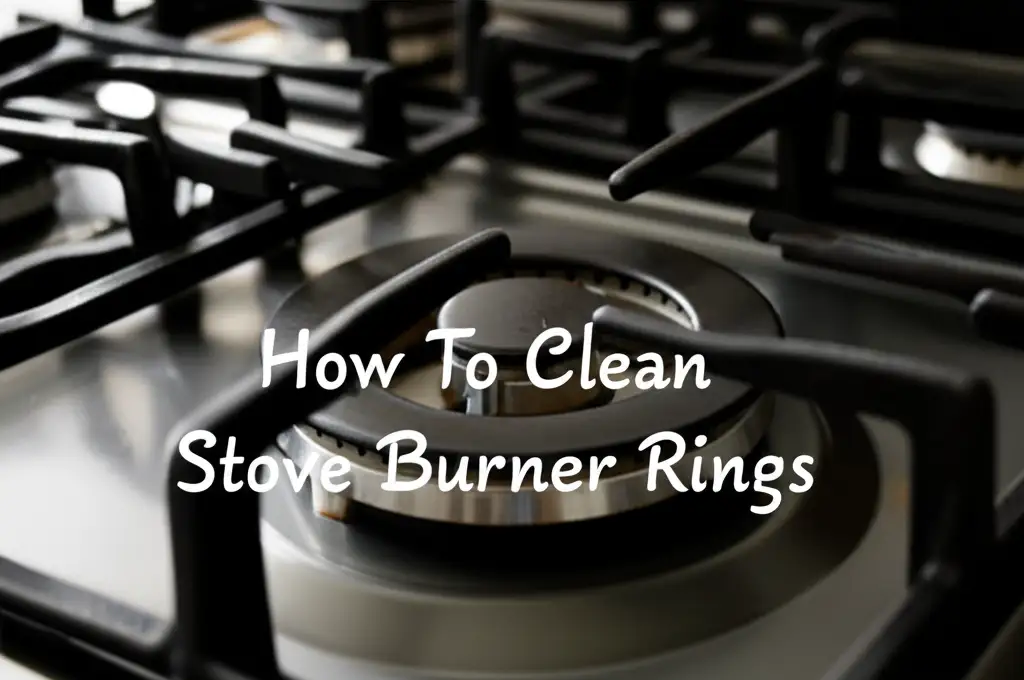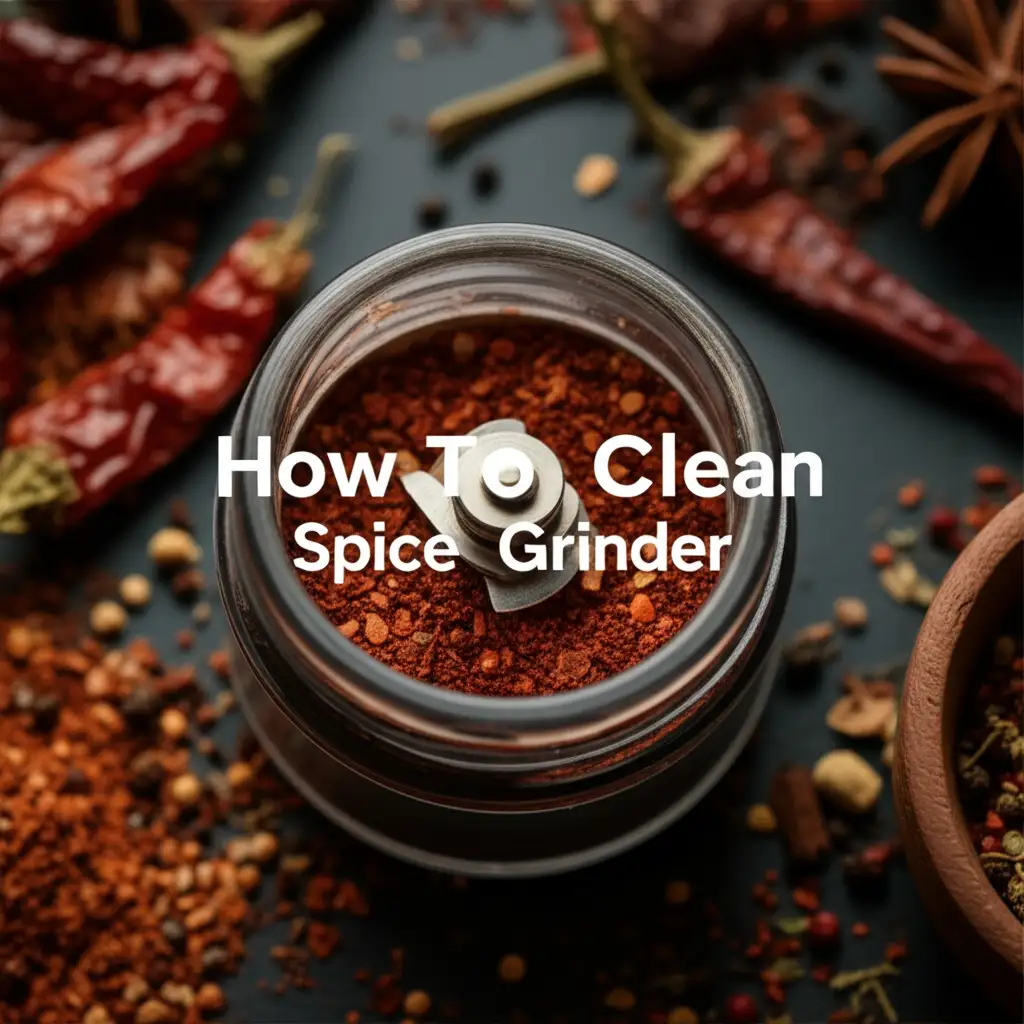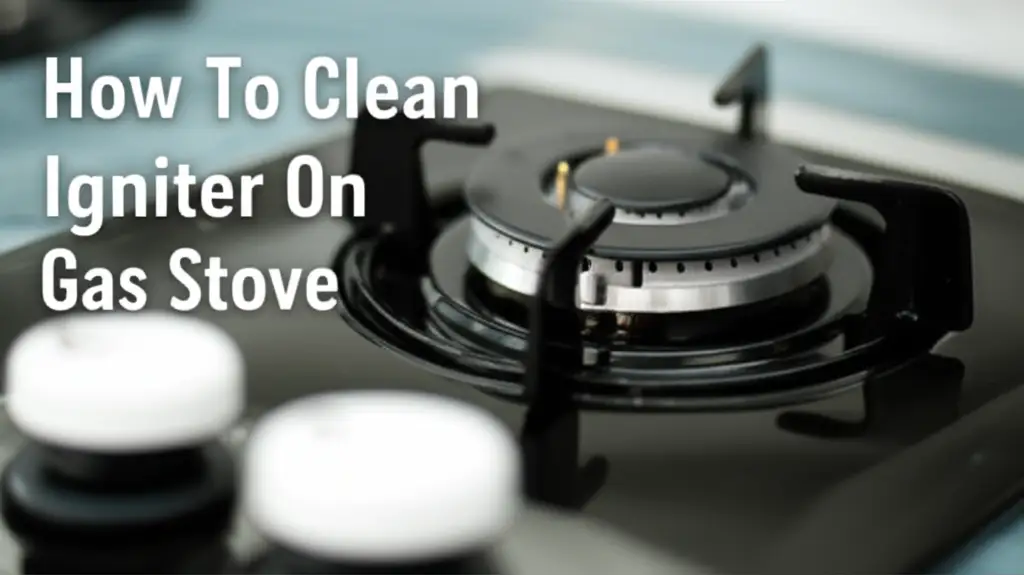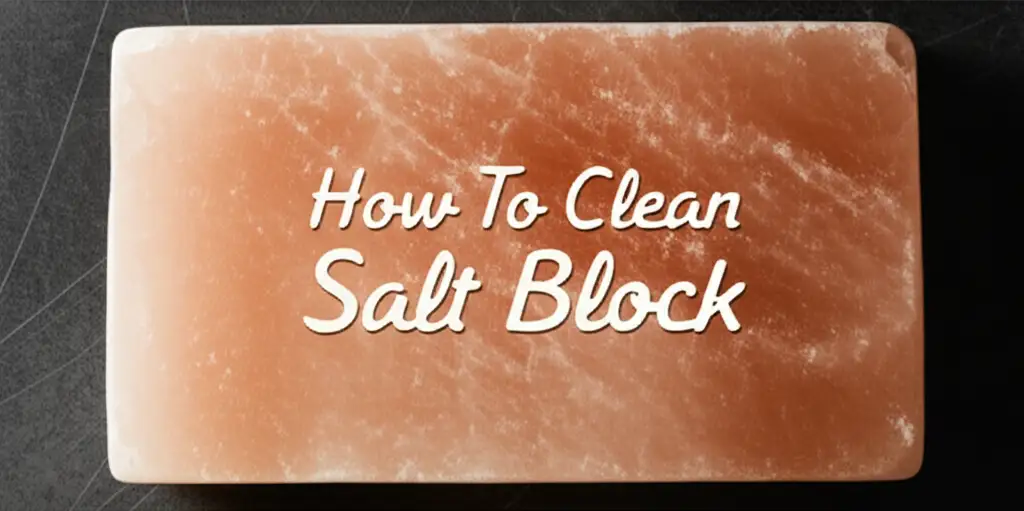· Kitchen Maintenance · 16 min read
How To Clean Stove Burner Rings

Restore Your Stove Burner Rings: A Cleaning Guide
A clean kitchen brings joy. Your stove, the heart of cooking, often bears the brunt of spills and splatters. Specifically, those neglected stove burner rings collect grime and burnt food. Learning how to clean stove burner rings helps your kitchen look its best.
I often see burner rings covered in stubborn residue. This makes the whole stove look dirty. More than just appearance, dirty burner rings can affect cooking efficiency. Food cooks unevenly when heat distribution is blocked. This guide helps you tackle even the toughest stains on your stove burner rings. We cover different types of rings, cleaning methods, and essential safety tips. You will learn easy steps to restore their shine and function.
Takeaway:
- Identify your burner ring type for the best cleaning method.
- Use household items like baking soda and vinegar for effective cleaning.
- Always ensure the stove is off and cool before you clean.
- Regular wiping helps prevent heavy grime buildup.
- Proper maintenance makes your stove last longer and work better.
You can clean stove burner rings effectively using common household cleaners like baking soda and vinegar, or commercial degreasers. First, remove the rings and soak them in warm, soapy water. Then, scrub away grime with a non-abrasive pad. Rinse thoroughly and dry completely before reattaching them to the stove.
Why Clean Your Stove Burner Rings? Beyond Just Looks
Your stove burner rings see a lot of action. They catch spills, splatters, and burnt-on food. This buildup makes your kitchen look untidy. A dirty stove can be a real eyesore.
Beyond looks, dirty rings impact performance. Accumulated grease and food particles can block heat flow. This means your food might not cook evenly. It wastes energy and makes cooking harder.
Cleaning your stove burner rings also helps with hygiene. Leftover food can attract pests. It can also harbor unpleasant smells. A clean stove creates a healthier cooking environment for your family.
Regular cleaning extends the life of your appliance. Grime can corrode metal over time. This leads to costly repairs or replacements. Taking care of your stove parts saves you money in the long run.
Think of it as routine maintenance for an important tool. Just like you clean your dishes, you should clean your stove. This simple task improves both function and appearance. I find that a clean stove makes me enjoy cooking even more.
Types of Stove Burner Rings: Knowing Your Materials
Before you start cleaning, identify your stove burner rings. Different materials require specific cleaning approaches. Knowing your type helps prevent damage and ensures good results. This step is important for effective cleaning.
Gas stoves often have cast iron grates and burner caps. The rings are usually metal under these caps. Cast iron is durable but porous. It can rust if not dried properly after cleaning. Many rings are also porcelain-coated or chrome-plated metal. These materials are smoother and less prone to rust but can scratch.
Electric stoves use coil elements. The rings on electric stoves are often chrome or porcelain drip pans. These pans sit under the heating coils. They catch spills and food debris. Chrome pans can tarnish or discolor over time. Porcelain pans are usually easier to clean but can chip.
Some modern electric stoves have glass or ceramic smooth tops. These stoves do not have traditional burner rings. Instead, they have burner outlines on a flat surface. Cleaning these types requires a different approach, often using specialized cleaners for glass surfaces. This guide focuses on cleaning removable burner rings and drip pans.
Knowing what you have helps you pick the right tools and cleaning solutions. For example, abrasive scrubbers can scratch chrome or porcelain. Always choose methods suitable for your specific ring type. This protects your stove and makes cleaning easier.
Gathering Your Arsenal: Tools and Cleaning Agents
You need the right supplies to clean stove burner rings effectively. Gather everything before you start. This saves time and makes the process smooth. Most items you need are likely in your home already.
First, you need protective gear. Gloves keep your hands clean and safe from cleaning agents. Old towels or newspapers protect your countertop or floor. You do not want to spread the mess.
For tools, gather a few non-abrasive sponges or cloths. Microfiber cloths work well for wiping. A soft-bristle brush, like an old toothbrush, helps with crevices. A plastic scraper or spatula is useful for loosening stuck-on gunk. Avoid metal scrubbers, as they can scratch surfaces.
Next, consider your cleaning agents. Dish soap is a good start for general grime. For tough stains, baking soda is a cleaning powerhouse. White vinegar is another versatile option. It helps cut through grease and neutralize odors. Some people use ammonia for extremely stubborn stains, but always use it with good ventilation. You can also buy commercial degreasers made for kitchen appliances.
Fill a large basin or sink with warm water. You will use this for soaking. A small bowl for mixing pastes is also helpful. Having all these items ready before you begin speeds up the whole cleaning process. I always lay everything out first.
Cleaning Gas Stove Burner Rings: A Step-by-Step Guide
Cleaning gas stove burner rings is straightforward. First, make sure your stove is completely cool. Safety comes first. Turn off the gas supply if you feel more comfortable.
Start by removing all removable parts. Take off the grates, burner caps, and the burner rings themselves. Put these items aside. Often, the grates and caps also need cleaning. You can clean these components together. For detailed steps on cleaning other gas stove components, you can read our guide on how to clean burners on gas stove.
Fill a sink or large basin with hot water and a generous amount of dish soap. Submerge the burner rings, caps, and grates in the soapy water. Let them soak for at least 30 minutes, or even a few hours for heavy buildup. Soaking helps to loosen dried food and grease. For deep grime, you might want to consider how to clean gas stove grates in a dishwasher, if yours are dishwasher safe, for an easier clean.
After soaking, take each piece out. Use a non-abrasive sponge or a stiff brush to scrub away the loosened grime. For stubborn spots, make a paste with baking soda and a little water. Apply the paste directly to the stained areas. Let it sit for 15-20 minutes, then scrub gently. You will see the grime come off. If you are dealing with particularly greasy buildup, check out our insights on how to clean stove drip pans, as some methods can apply to rings too.
Rinse all cleaned parts thoroughly under running water. Ensure all soap residue is gone. Dry each piece completely with a clean cloth. Moisture can cause rust, especially on cast iron parts. Allow them to air dry fully if possible before putting them back on the stove. This step ensures longevity for your burner rings.
Reviving Electric Stove Burner Rings: Coils and Drip Pans
Electric stoves, while different from gas, still collect their share of spills. The “burner rings” on an electric stove are typically the drip pans. These sit under the heating coils. Cleaning these pans is crucial for a tidy look.
First, unplug your electric stove from the power outlet. Safety is important before you start cleaning. Wait for the coils to cool down completely. They can retain heat for a long time.
Carefully lift each heating coil element. They usually pull up or can be unhooked. Slide out the chrome or porcelain drip pans from underneath. These are the main “rings” you need to clean. Sometimes, the coils themselves also need a gentle wipe to remove dust.
For general cleaning, wash the drip pans with warm, soapy water. Use a non-abrasive sponge to scrub away loose food particles. For more stubborn stains, baking soda is very effective. Make a thick paste with baking soda and a small amount of water. Apply this paste to the dirty areas of the drip pans.
Let the baking soda paste sit on the pans for 15-30 minutes. This allows the baking soda to break down the grease and burnt-on food. After soaking, scrub the pans with a non-abrasive brush or sponge. You might need some elbow grease for really stuck-on messes. Rinse the pans thoroughly under running water to remove all residue.
Dry the drip pans completely before putting them back. Moisture can cause chrome pans to tarnish or rust. If the coils themselves are dirty, gently wipe them with a damp cloth, but avoid getting the electrical connections wet. Never submerge the heating coils in water. Reassemble your stove carefully once everything is dry.
Battling Stubborn Stains: Advanced Cleaning Methods
Sometimes, a simple scrub with soap and water is not enough. Burnt-on food and grease can be very tough. For these stubborn stains, you need more powerful methods. Do not worry, common household items often provide the best solutions.
One of the most effective methods uses baking soda. Make a thick paste by mixing baking soda with a little water. Apply this paste generously to the heavily stained areas on your stove burner rings. Ensure the paste covers all the burnt-on grime. Let the paste sit for several hours, or even overnight, to work its magic. For more on this method, read our guide on how to clean rings with baking soda.
After the paste has sat, scrub the area with a non-abrasive brush or sponge. The dried paste will act as a gentle abrasive. This helps lift the burnt food. Rinse the rings thoroughly afterwards. Repeat if necessary for extremely tough spots.
Another powerful ally is white vinegar. Vinegar is excellent for cutting through grease. After an initial cleaning, if residue remains, spray the rings with white vinegar. Let it sit for 10-15 minutes. Then, wipe clean. Vinegar can also remove mineral deposits. For tips on using vinegar for stove cleaning, see our article on how to clean glass stove top with vinegar.
For truly severe, burnt-on messes, consider ammonia. Place your burner rings in a sealed plastic bag. Add about a quarter cup of ammonia to the bag, but do not let the rings touch the liquid directly. Seal the bag and leave it outdoors or in a well-ventilated area overnight. The ammonia fumes will loosen the grime. Be extremely careful with ammonia; always wear gloves and ensure good ventilation. This method is very powerful for removing burnt-on stains, similar to methods for how to clean burnt milk from stove or how to clean burn marks off stove. After, scrub and rinse thoroughly.
Natural Cleaning Solutions for Stove Burner Rings: Eco-Friendly Options
Many people prefer natural cleaning solutions. These options are safer for your home and the environment. They also work very well on stove burner rings. You might already have these ingredients in your pantry.
Lemon juice is a natural acid that cuts through grease. Squeeze fresh lemon juice onto your dirty burner rings. Let it sit for about 10-15 minutes. The acid helps break down grime. After, scrub with a non-abrasive sponge and rinse. You can also rub half a lemon directly on the rings. This leaves a fresh scent too.
Salt is another effective natural abrasive. Mix coarse salt with a little water or lemon juice to form a paste. Apply this paste to the stained areas. Gently scrub with a sponge or cloth. The salt helps scrape away stuck-on food. Rinse well to remove all salt residue. This method is gentle yet powerful.
Cream of tartar, often used in baking, also has cleaning power. Mix cream of tartar with a few drops of water to create a paste. Apply it to the burner rings. Let it sit for 10-15 minutes. Then, scrub with a damp cloth. Cream of tartar is especially good at removing rust spots from chrome or stainless steel.
For a powerful natural degreaser, combine baking soda and vinegar. Sprinkle baking soda generously over the burner rings. Then, spray white vinegar over the baking soda. It will fizz, indicating a reaction. Let it sit for 15-30 minutes. The fizzing action helps loosen tough grime. Scrub and rinse thoroughly afterwards. This combination is a classic for a reason.
Using these natural alternatives reduces chemical exposure. They are safe for most surfaces when used correctly. Always test a small, hidden area first if you are unsure. These methods make cleaning your stove burner rings easy and green.
Preventive Care: Keeping Your Burner Rings Cleaner Longer
The best way to deal with dirty stove burner rings is to prevent them from getting too dirty. Regular, simple maintenance makes a big difference. It saves you from deep cleaning efforts later on. A little bit of effort often goes a long way in keeping your kitchen tidy.
Wipe up spills immediately. Food spills, especially sugary liquids or sauces, burn onto the hot surface. This creates stubborn stains. As soon as the stove cools down, wipe up any fresh spills. A damp cloth with a bit of dish soap usually works for new messes. Do not let spills sit and harden.
Use correct pan sizes. Pans that are too small can cause food to spill over the sides. This leads to more mess on your burner rings. Use a pan that fits the burner size. This helps contain splatters. It also makes cooking more efficient.
Consider using burner covers. These are protective caps that sit over the burner rings when not in use. They prevent dust, debris, and accidental spills from reaching the rings. They come in various styles and materials. Just remember to remove them before turning on the burner.
Clean your burner rings regularly, even if they do not look very dirty. A quick wipe-down every week or two prevents grime buildup. This can be as simple as wiping them with a damp, soapy cloth. For gas stoves, periodically remove the grates and caps for a quick wipe. This routine prevents serious grime.
By implementing these preventive measures, your stove burner rings will stay cleaner. You will spend less time on deep cleaning. This means more time for cooking and enjoying your clean kitchen. I always try to do a quick wipe-down after cooking.
Safety Precautions: Clean Smart, Stay Safe
Cleaning your stove burner rings requires some safety measures. Your stove uses electricity or gas, so caution is important. Always prioritize your safety and the safety of your home. Following these steps helps prevent accidents.
First and most important, ensure the stove is completely off and cool. For electric stoves, unplug it from the wall outlet. For gas stoves, turn off the gas supply if you plan deep cleaning or removing components. Never clean a hot stove or one that is still connected to power or gas. This prevents burns, electrical shocks, or gas leaks.
Use proper ventilation, especially when using strong cleaning agents. Ammonia, for example, produces strong fumes. Open windows or turn on your kitchen exhaust fan. Good airflow disperses fumes and keeps the air safe to breathe. This protects your lungs and prevents dizziness.
Wear protective gloves. Cleaning agents, even natural ones, can irritate your skin. Gloves protect your hands from chemicals and grime. They also provide a better grip when handling wet or slippery parts. I always wear gloves for cleaning tasks.
Never mix cleaning products unless specified by the manufacturer. Mixing certain chemicals, like bleach and ammonia, creates dangerous fumes. Always read product labels. Stick to one cleaner or follow recommended combinations. This prevents harmful chemical reactions.
Handle stove parts carefully. Burner rings and grates can be heavy or have sharp edges. Avoid dropping them, as this can damage the parts or your floor. When reassembling, ensure all parts are dry and placed correctly. This prevents operational issues. Following these safety steps makes cleaning your stove a secure task.
FAQ Section
Q1: How often should I clean my stove burner rings? A1: You should wipe your stove burner rings after every major spill. For general cleaning, aim to clean them once a week or at least every two weeks. Deep cleaning might be needed every month or two, depending on how often you cook. Regular maintenance helps prevent tough buildup and keeps your stove looking good.
Q2: Can I put stove burner rings in the dishwasher? A2: Generally, it is not recommended to put stove burner rings in the dishwasher. Dishwashers can cause discoloration, rust, or damage to the finish, especially on cast iron or chrome parts. Handwashing them with warm, soapy water is usually the safest and most effective method. Always check your stove’s manual for specific care instructions.
Q3: What is the best way to remove burnt-on food from rings? A3: The best way to remove burnt-on food is often with a baking soda paste. Mix baking soda with a little water to form a thick paste. Apply it to the burnt areas and let it sit for several hours or overnight. Then, scrub with a non-abrasive brush and rinse. For very stubborn spots, a short ammonia fume treatment can also be effective.
Q4: Can I use steel wool or abrasive scrubbers on my burner rings? A4: You should avoid using steel wool or highly abrasive scrubbers on most stove burner rings. These can scratch or damage the finish on chrome, porcelain, or painted surfaces. Stick to non-abrasive sponges, soft-bristle brushes, or plastic scrapers. This helps preserve the appearance and integrity of your rings.
Q5: My chrome burner rings are discolored. Can I restore their shine? A5: Discolored chrome burner rings can often be improved. Try making a paste with cream of tartar and water, then scrub it onto the rings. Another method is using a mixture of white vinegar and baking soda. For persistent tarnish, some commercial chrome cleaners are available. Regular cleaning and drying helps prevent future discoloration.
Q6: Are there any specific cleaners I should avoid using? A6: Avoid using harsh oven cleaners directly on burner rings unless the product specifically states it is safe for that material. Do not use chlorine bleach, especially on stainless steel or aluminum, as it can cause pitting and discoloration. Always test any new cleaner on an inconspicuous area first to ensure it does not damage the finish.
Conclusion
Cleaning your stove burner rings might seem like a small task. However, it makes a big impact on your kitchen. A clean stove looks better, works more efficiently, and lasts longer. We have covered different types of rings and effective cleaning methods. From simple soap and water to powerful baking soda pastes, you have many options.
Remember to identify your specific burner ring material. This helps you choose the right cleaning approach. Always prioritize safety by ensuring the stove is cool and disconnected. Regular maintenance saves you time and effort in the long run. Embrace these simple steps to keep your stove burner rings spotless. Your kitchen will thank you for it. Start cleaning today for a brighter, more efficient cooking space!
- stove burner cleaning
- kitchen cleaning tips
- appliance care
- cleaning hacks
- home cleaning




